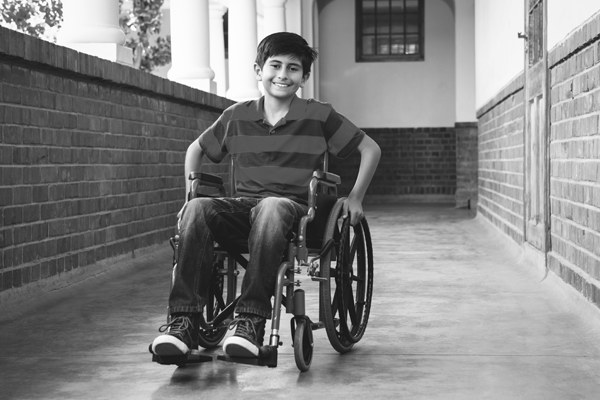Clinical Trial Shows Promising Results for AAV Gene Therapy for LGMD 2E/R4
Clinical Trial Shows Promising Results for AAV Gene Therapy for LGMD 2E/R4 https://pediatricsnationwide.org/wp-content/uploads/2022/09/InPractice_Brief_Multimodal-Molecular_Edit-1024x783.jpg 1024 783 Abbie Miller Abbie Miller https://pediatricsnationwide.org/wp-content/uploads/2023/05/051023BT016-Abbie-Crop.jpg- March 18, 2024
- Abbie Miller

Recently published in Nature Medicine, interim results from a Phase 1/2 trial offer promising results.
Limb-girdle muscular dystrophy (LGMD) 2E/R4 is a rare, progressive neuromuscular disorder caused by mutations in the β-sarcoglycan (SGCB) gene. These mutations lead to SGCB protein deficiency, ultimately resulting in muscle loss. Progressive, debilitating weakness and wasting begin in the muscles around the hips and shoulders before moving to the arms and legs.
Recently, researchers from Nationwide Children’s Hospital and Sarepta Therapeutics published the interim results of a Phase 1/2 trial evaluating the safety and efficacy of SRP-9003 (bidridistrogene xeboparvovec) for the treatment of limb-girdle muscular dystrophy Type 2E (LGMD2E/R4), also known as beta sarcoglycanopathy. The study is published in Nature Medicine.
“Children with LGMD typically begin having difficulty running, jumping and climbing stairs before age 10. They then lose the ability to walk in their teen years,” says Jerry Mendell, MD, the lead author of the study. “LGMD often leads to significant disability and premature death, and unfortunately, there are currently no approved treatments to alter the course of the disease.”
SRP-9003 uses an adeno-associated virus (AAV) gene therapy containing a codon-optimized, full-length human SGCB transgene. SRP-9003 uses the AAVrh74 vector, which was also used in the recently FDA-approved gene therapy for Duchenne muscular dystrophy.
Trial participants aged 4 to 15 years with confirmed SGCB mutation in both alleles received one intravenous infusion of the vector. Participants were split into two cohorts: one group received 1.85 × 1013 vector genome copies per kg and the other received 7.41 × 1013 vector gene copies per kg. Adverse events included vomiting (four of 6 patients) and gamma-glutamyl transferase increase (three of 6 patients). The adverse events were resolved with standard therapies.
“Overall, the safety profile of the therapy was favorable across both cohorts,” says Dr. Mendell, who retired as a principal investigator and attending neurologist at Nationwide Children’s in October 2023. He currently serves as a senior advisor in the Center for Gene Therapy at Nationwide Children’s and a senior advisor with Sarepta Therapeutics, Inc.
Robust SGCB expression based on immunoblot analysis, was observed in patients 60 days after administration: in cohort 1, it was 36% of normal expression and in cohort 2, it was 62% normal expression. Functional outcomes data also showed improvements. Both gene expression and functional improvements were maintained for two years.
“We are pleased to report early results from the Phase 1/2 trial demonstrated significant protein expression in both cohorts at both 60 days and two years after treatment,” says Louise Rodino-Klapac, PhD, executive vice president, chief scientific officer and head of research and development at Sarepta Therapeutics. “Additionally, we observed functional benefits including slowed progression of this disease, improved mobility, and enhanced the quality of life for individuals living with LGMD2E.”
Because a concern for the field of gene therapy is the potential for waning effects over time, longer-term studies are needed. The patients in the Phase 1/2 study will continue to be followed, with a final analysis planned at 5 years post-therapy. Additionally, in January, Sarepta Therapeutics, Inc. announced that screening is underway in SRP-9003-301, a Phase 3, multinational, open-label study of SRP-9003. The study, named EMERGENE, will enroll 15 participants aged 4 and older.
Disclosures: This gene therapy was initially developed by Drs. Rodino-Klapac and Mendell at Nationwide Children’s Hospital. It was licensed to Myonexus/Sarepta in 2017.
Dr. Mendell is a senior advisor with Sarepta Therapeutics, Inc.
References:
Mendell JR, Pozsgai ER, Lewis S, et al. Gene therapy with bidridistrogene xeboparvovec for limb-girdle muscular dystrophy type 2E/R4: phase 1/2 trial results. Nat Med. 2024;30(1):199-206. doi:10.1038/s41591-023-02730-9
Sarepta Therapeutics Initiates Screening in EMERGENE, a Phase 3 Clinical Study of SRP-9003 for the Treatment of Limb-Girdle Muscular Dystrophy Type 2E/R4. Sarepta Theraputics. https://investorrelations.sarepta.com/news-releases/news-release-details/sarepta-therapeutics-initiates-screening-emergene-phase-3?_ga=2.78038679.2022989528.1707178156-1637175906.1705963085. Accessed: Feb. 16, 2024.
About the author
Abbie (Roth) Miller, MWC, is a passionate communicator of science. As the manager, medical and science content, at Nationwide Children’s Hospital, she shares stories about innovative research and discovery with audiences ranging from parents to preeminent researchers and leaders. Before coming to Nationwide Children’s, Abbie used her communication skills to engage audiences with a wide variety of science topics. She is a Medical Writer Certified®, credentialed by the American Medical Writers Association.
-
Abbie Millerhttps://pediatricsnationwide.org/author/abbie-miller/
-
Abbie Millerhttps://pediatricsnationwide.org/author/abbie-miller/
-
Abbie Millerhttps://pediatricsnationwide.org/author/abbie-miller/
-
Abbie Millerhttps://pediatricsnationwide.org/author/abbie-miller/







